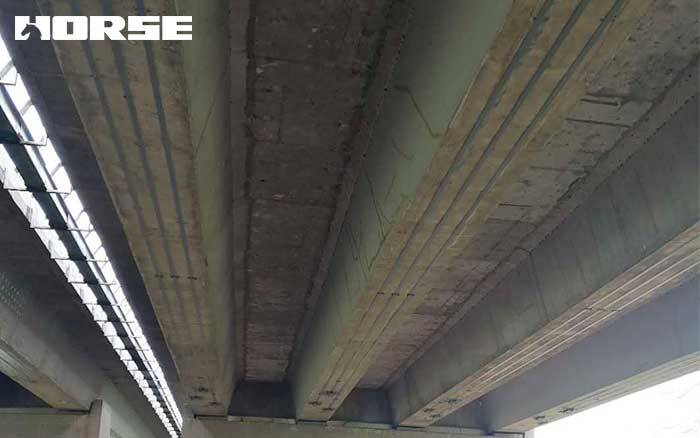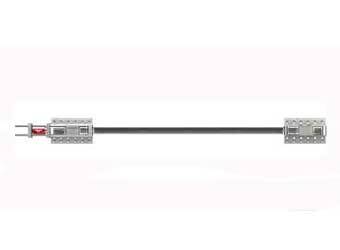Solutions
Horse Construction offers full range of structural strengthening materials with technical supports, documentation supports, products supports, project supports.
The effect of strengthening concrete T-beam bridge with prestressed carbon fiber plate

The road and bridge construction industry in China is developing rapidly. As of the end of 2020, there are more than 1.17 million road bridges across the country, of which more than 320,000 bridges need to be repaired and reinforced. Bridge repair and reinforcement tasks are heavy.
With the continuous development of material science and technology, carbon fiber reinforcement has also been rapidly developed and applied in the bridge reinforcement industry. It has the advantages of light weight, high tensile strength, good corrosion resistance, convenient construction and operation, and high reinforcement efficiency. However, when the steel bar yields, the tensile force of the carbon fiber material has not reached 15% of its ultimate tensile strength.
Therefore, prestressed carbon fiber plate began to be used in bridge reinforcement, and it has the advantages of external prestress and carbon fiber materials. It can not only repair structural deformation and close cracks, but also greatly increase the utilization rate of carbon fiber materials and greatly increase the ultimate bearing capacity of reinforcement members.
Through the application of a pre-stressed carbon fiber plate reinforcement plan for an actual bridge project. And through the comparative analysis of the flexural bearing capacity before and after the reinforcement, the technical condition of the bridge, and the changes in the strain, deflection and natural frequency of the bridge under the same test load, the rationality and effectiveness of the prestressed carbon fiber plate reinforcement plan are verified.
Draw the following empirical conclusions through this case:
1) The static load strain test results show that under the same test load, the strain at the bottom of the main girder after reinforcement with prestressed carbon fiber is reduced by about 24% compared with that before reinforcement, and the deflection of the main beam is reduced by about 7% compared with that before reinforcement. After reinforcement, the force of each beam is more even, and the lateral connection of the bridge increases. Reinforcing T-beam bridges with prestressed carbon fiber plates can effectively improve the bending rigidity and bearing capacity of the main girder.
(2) The natural vibration test results show that the natural vibration modes of the front and rear main beams reinforced with prestressed carbon fiber plates are consistent. The frequency of the first-order in-plane mode is increased by about 2.54% compared with that before reinforcement, and the frequency of the first-order in-plane anti-symmetric mode is increased by about 20.68% compared with that before reinforcement.
(3) The flexural bearing capacity of the mid-span section of the T beam after the prestressed carbon fiber plate is used for reinforcement meets the requirements, and the bearing capacity of the main beam is increased by about 17%.
(4) After the use of prestressed carbon fiber plate reinforcement, the technical status of the bridge changed from Type 4 bridge to Type 2 bridge, from "intermediate repair or major repair work required" to "slight defect, no impact on the use of the bridge."
You can find anything here you are in need of, have a trust trying on these products, you will find the big difference after that.

High strength carbon fiber reinforced polymer (CFRP) strip / laminate / plate for structural strengthening and concrete repair

Prestressed carbon fiber reinforced polymer(CFRP) plate for slab, beam strengthening to increase stiffness, reduce distortion and deflection of members, reduce the cracks, avoid and stop cracking.

High strength, unidirectional carbon fiber sheet pre-saturated to form a carbon fiber reinforced polymer (CFRP) sheet used to strengthen structural concrete elements.